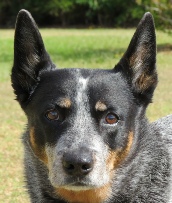
Copyright © 2013 CanineCancer.org.au All rights reserved.
Anal Sac Adenocarcinoma
Tumours of the anal sacs are uncommon in dogs and very rare in cats. Anal sac adenocarcinoma (ASAC) arise from apocrine sweat glands which drain into the anal sacs. They occur at a relatively low frequency in the dog, representing 17% of all perianal tumours.
The most common presenting complaints for animals with anal sac tumours are licking the hind end, scooting or straining to defecate. Some owners may notice a mass under the tail, and some dogs may produce flat, ribbon-
As with most tumours in animals and people, we do not know what causes ASAC to occur. Spaniels may be over-
Initial Evaluation
When an anal sac mass is detected, one of the first steps is to obtain a fine needle aspirate (FNA) or biopsy. An FNA may often be performed with the patient awake, or using quick-
Treatment/Prognosis
In those cases where surgery is possible, and there is no evidence of any spread further than the local lymph nodes, surgery is the initial treatment of choice. If there is regional lymph node involvement, these lymph nodes should be removed at the time of removal of the primary mass. Removal of less than 50% of the anal sphincter should not result in chronic faecal incontinence.
Chemotherapy following surgery may improve the outcome in some dogs. Chemotherapy can also be used in cases where surgery is not possible (if the tumour is too large or invasive), or if there is spread beyond the regional lymph nodes. Alternatively, metronomic chemotherapy (low dose, daily oral medications) may delay tumour progression. The small molecule inhibitor, toceranib phosphate (Palladia) that is also an oral drug, is reported to be of benefit in treating dogs with ASAC. There is also evidence that radiation therapy may also play a role in certain cases. Some animals may need additional forms of treatment to address their other symptoms, such as bisphosphonates to help control their blood calcium level; others may need to eat a high-
The average survival time achieved with surgery alone is approximately 12-
Dr Amy Lane BVSc (Hons) MVS FANZCVS
Registered Specialist In Veterinary Oncology




Other reliable and more detailed information on Anal Sac Carcinoma





HERE
